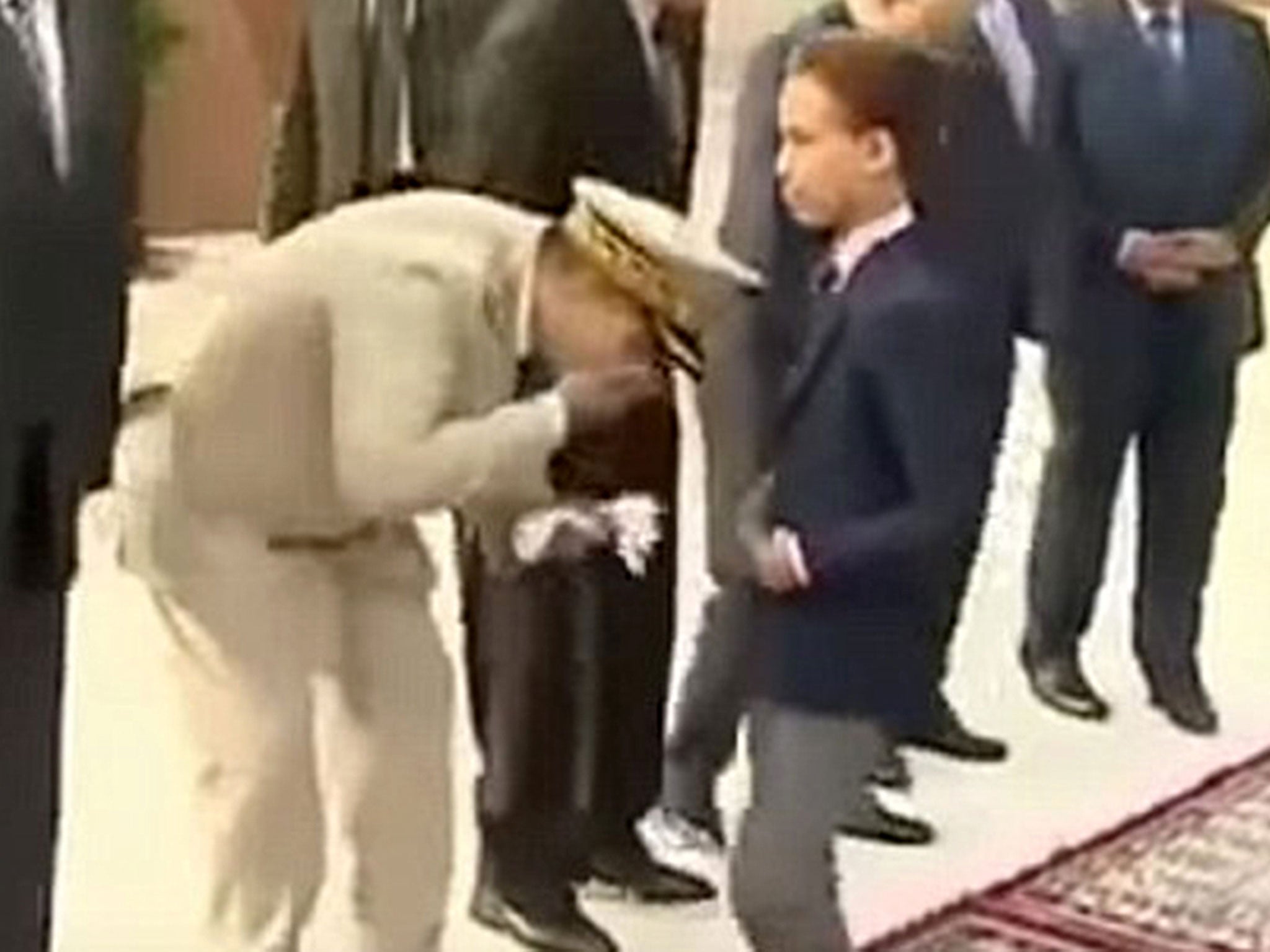Morocco's crown prince Moulay Hassan hates having his fingers kissed - which makes him a royal trendsetter
Simon Usborne presents a handy guide to monarchical mitts, from princely pointing to the royal wave

Your support helps us to tell the story
From reproductive rights to climate change to Big Tech, The Independent is on the ground when the story is developing. Whether it's investigating the financials of Elon Musk's pro-Trump PAC or producing our latest documentary, 'The A Word', which shines a light on the American women fighting for reproductive rights, we know how important it is to parse out the facts from the messaging.
At such a critical moment in US history, we need reporters on the ground. Your donation allows us to keep sending journalists to speak to both sides of the story.
The Independent is trusted by Americans across the entire political spectrum. And unlike many other quality news outlets, we choose not to lock Americans out of our reporting and analysis with paywalls. We believe quality journalism should be available to everyone, paid for by those who can afford it.
Your support makes all the difference.You've got to hand it to little Moulay Hassan. He's only 12 and never asked to be first in line to the Moroccan throne, or to wear tiny tailored suits at military processions. And he certainly never asked for his hand to be kissed by a sorry line-up of soldiers and suits. So the crown prince has taken a bit of control over his own life by developing a sort of anti-protocol for manual engagement.
In a clip that went viral yesterday, Moulay quickly yet tentatively presents his right hand to each dignitary in turn. The briefest shake occurs, and Moulay is down with that, but any time the other party then moves to raise the prince's hand to his lips, he pulls back as if he's been electrocuted. The result is a quick-fire parade of awkward low-fives and a row of men left kissing their own hands.
The clip emerged on the day an even littler prince displayed a more conformist royal-hand approach. A photograph of Prince George arriving for his first day of nursery in Norfolk showed him pointing pointlessly at something, in the manner of a chubby-faced Charles Wales. The two-year-old hasn't yet adopted the hands-behind-the-back walk pioneered by the Duke of Edinburgh, nor his grandfather's finger-pulling thing, but he has already nailed the royal wave.
It's always been awkward being royal and having hands. Long gone are the days when a monarch's fingers had any practical use. When they enjoyed a divine right to rule, it was believed that a royal touch had the power to cure a range of illnesses. For centuries, monarchs stroked sick people, particularly those with scrofula. The nasty neck infection often subsided by itself but the apparent miracle of healing proved the legitimacy of the monarchy.
Charles II laid his hands on a record 92,000 scrofulous subjects during his reign in the 17th century. Less keen queens and kings started offering the sick gold coins known as "touch pieces" instead of royal skin. In the old Austrian House of Hapsburg, meanwhile, it was believed that a regal kiss on the mouth could cure a stutter, presumably by rendering the sufferer entirely speechless.
But then we witness, using the present tense favoured by telly historians, a gradual redundancy and withdrawal of the monarchical mitt from the public grasp. Today a Moroccan prince can recoil from his subjects and anyone touching the wrong bit of the Queen is pilloried by royalists and preening etiquette experts. Some will still feel blessed by Her Maj's touch, but it's not going to clear up your gonorrhoea.
"Royal touching takes a downturn, I would imagine, when Victorians start to understand how infections are disseminated," says Philippa Gregory, the historical novelist who majors on the Tudors. "That's when the gloves come in."
It's rare to see Queen Elizabeth's naked hands when there is a risk of her meeting even healthy subjects. But, unlike Moulay, she goes in for ceremonial hand-kissing. After days of will-they-won't-they sexual tension, lifelong republican Jeremy Corbyn went in for the kiss, if not the kneel, when the Queen welcomed the Labour leader to the Privy Council last November.
We may never know if he followed the lead of fellow republican Tony Benn, who revealed that he used his own thumb as a barrier on the occasions when tradition required him to show the Queen some love.
The history of the peculiar royal wave is harder to chart, and can be viewed in some ways as a form of manual propaganda, a legacy of the royal touch. Gregory traces it to Elizabeth I, who ruled through perilous times and needed to work hard to stay popular. "She does it by appealing to the crowd, smiling and waving rather than passing through it like an icon," Gregory says. Little Moulay has much to learn.
Join our commenting forum
Join thought-provoking conversations, follow other Independent readers and see their replies
Comments